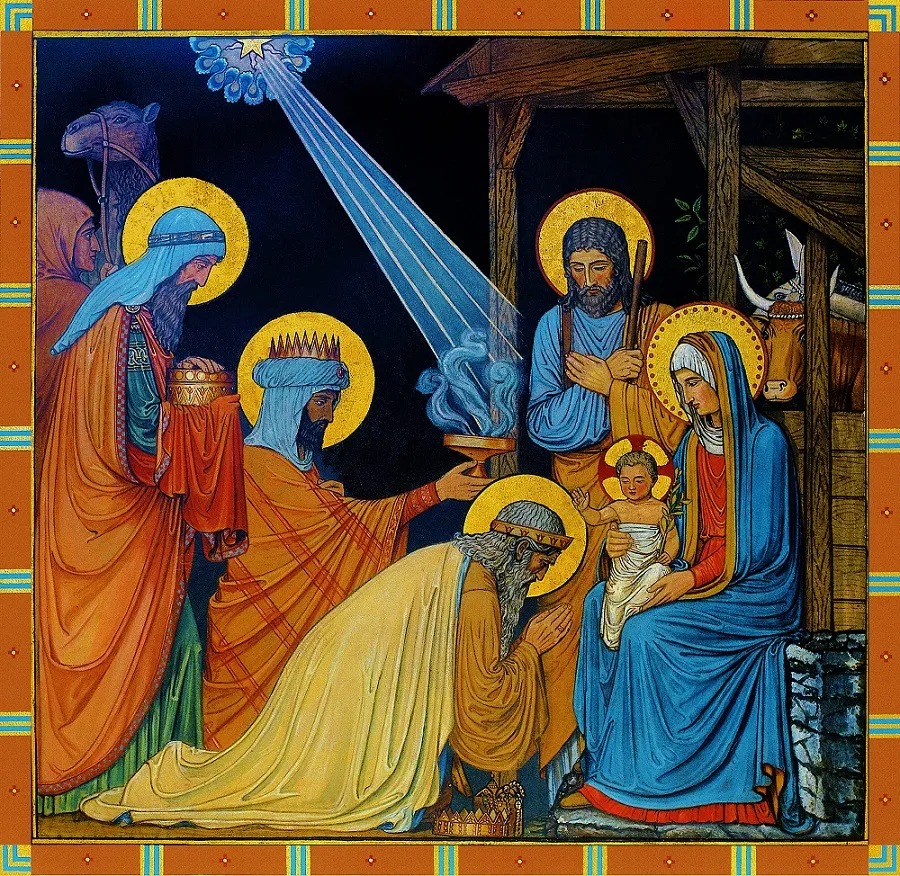Blog
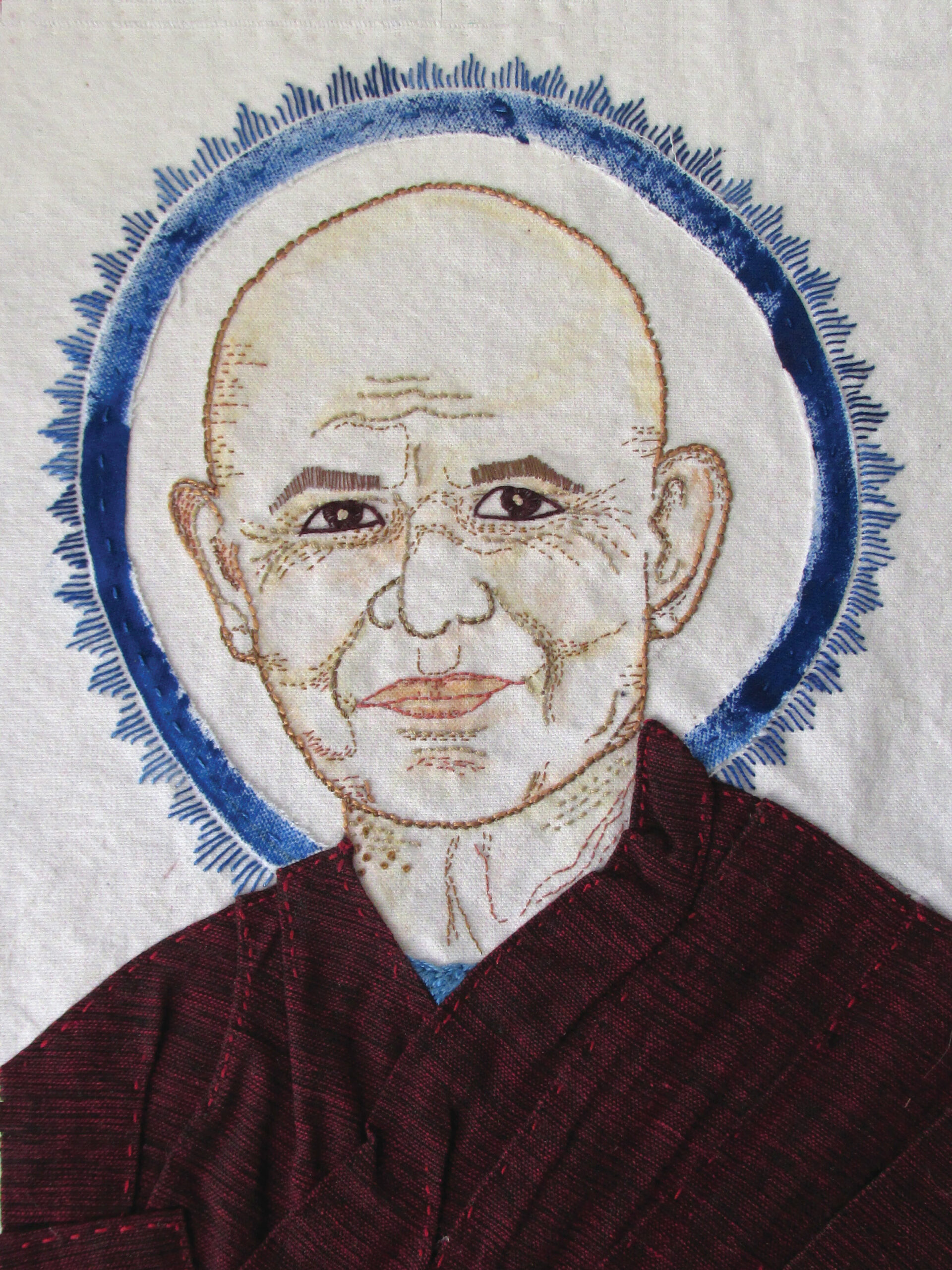
This week’s NASA/ESA Hubble Space Telescope Picture of the Week shows a tiny patch of sky in the constellation Hydra. The stars and galaxies depicted here span a mind-bending range of distances. Nearest to us in this image are stars within our own Milky Way galaxy, which are marked by diffraction spikes. The bright star that sits just at the edge of the prominent bluish galaxy is only 3230 light-years away, as measured by ESA’s Gaia space observatory.
Behind this star is a galaxy named LEDA 803211. At 622 million light-years distant, this galaxy is close enough that its bright galactic nucleus is clearly visible, as are numerous star clusters scattered around its patchy disc. Many of the more distant galaxies in this frame appear star-like, with no discernible structure, but without the diffraction spikes of a star in our galaxy.
Of all the galaxies in this frame, one pair stands out in particular: a smooth golden galaxy encircled by a nearly complete ring in the upper-right corner of the image. This curious configuration is the result of gravitational lensing, in which the light from a distant object is warped and magnified by the gravity of a massive foreground object, like a galaxy or a cluster of galaxies. Einstein predicted the curving of spacetime by matter in his general theory of relativity, and galaxies seemingly stretched into rings like the one in this image are called Einstein rings.
The lensed galaxy, whose image we see as the ring, lies incredibly far away from Earth: we are seeing it as it was when the Universe was just 2.5 billion years old. The galaxy acting as the gravitational lens itself is likely much closer. A nearly perfect alignment of the two galaxies is necessary to give us this rare kind of glimpse into galactic life in the early days of the Universe.
[Image Description: Many mostly small, bright objects scattered over a dark background in space. In the top half on the right is an elliptical galaxy, a round light larger than the others, with a slightly warped ring of light around it. In the bottom half there is a barred spiral galaxy, big enough that we can see its bluish arms and its core in detail. Other objects include distant galaxies and nearby stars.]
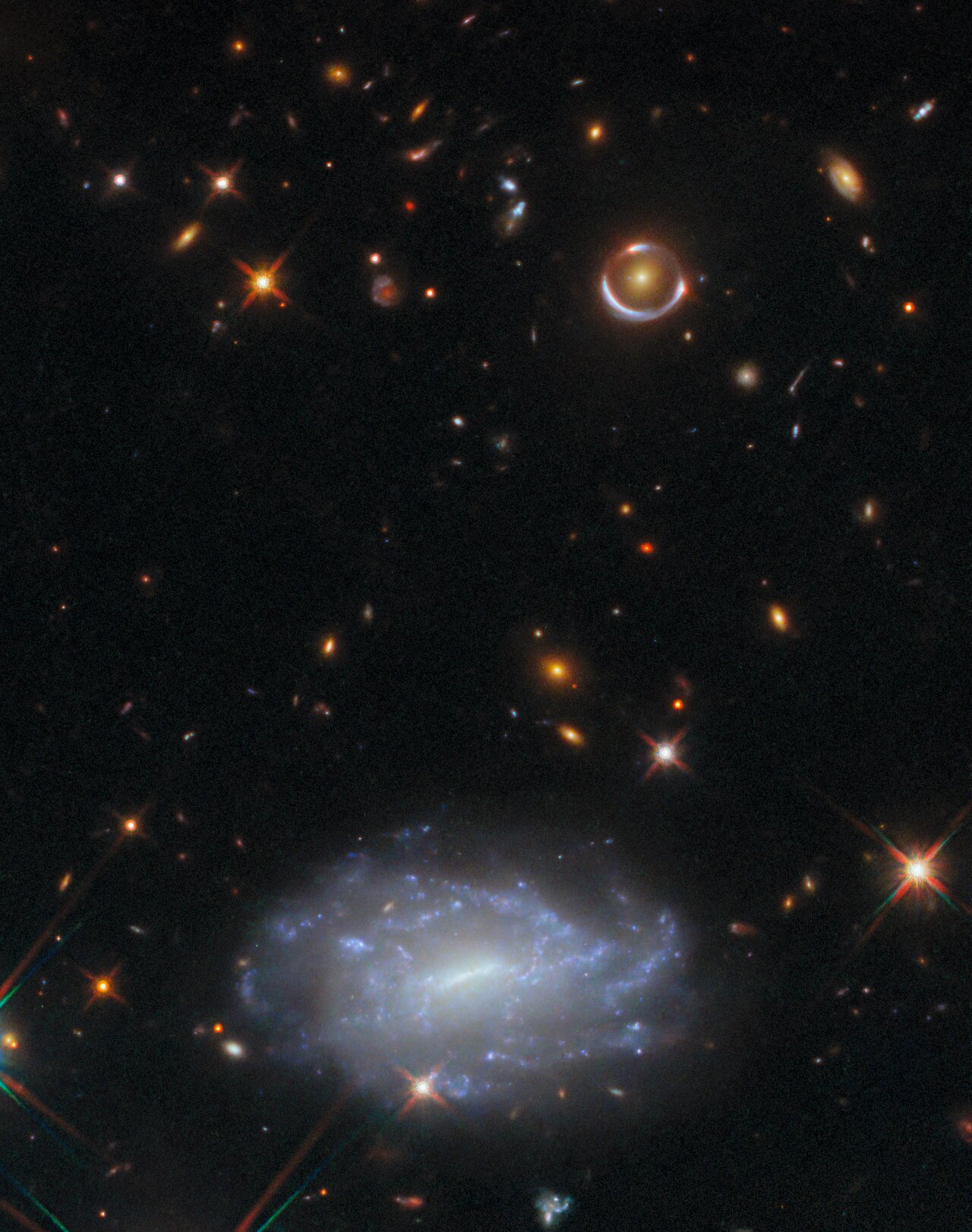
Alexandra Elene MacLean Denny (6 January 1947 – 21 April 1978) was an English singer-songwriter who was lead singer of the British folk rock band Fairport Convention. She has been described as “the pre-eminent British folk rock singer”.
After briefly working with the Strawbs, Denny joined Fairport Convention in 1968, remaining with them until 1969. She formed the short-lived band Fotheringay in 1970, before focusing on a solo career. Between 1971 and 1977, Denny released four solo albums: The North Star Grassman and the Ravens, Sandy, Like an Old Fashioned Waltz and Rendezvous. She also duetted with Robert Plant on “The Battle of Evermore” for Led Zeppelin‘s album Led Zeppelin IV in 1971. Denny died in 1978 at the age of 31 from head injuries sustained as a result of a fall down a flight of stairs.
Music publications Uncut and Mojo have described Denny as Britain’s finest female singer-songwriter. Her composition “Who Knows Where the Time Goes?” has been recorded by Judy Collins, Eva Cassidy, Nina Simone, Mary Black, Kate Wolf, Nanci Griffith, 10,000 Maniacs and Cat Power. Her recorded work has been the subject of numerous reissues, along with a wealth of previously unreleased material which has appeared over the more than 40 years since her death, including a 19-CD box set released in November 2010.
In January 2023, Denny was ranked #164 on Rolling Stone‘s list of the 200 Greatest Singers of All Time. She died on 21 April 1978 without regaining consciousness. Her death was ruled to be the result of a traumatic mid-brain haemorrhage and blunt force trauma to her head. She was 31 years old.
more...Ebo Taylor (born 1936) is a Ghanaian guitarist, composer, bandleader, record producer and arranger focusing on highlife and afrobeat music.
Taylor has been a pivotal figure on the Ghanaian music scene for over six decades. In the late 1950s he was active in the influential highlife bands the Stargazers and the Broadway Dance Band. In 1962, Taylor took his group, the Black Star Highlife Band, to London. In London, Taylor collaborated with Nigerian afrobeat Initiator Fela Kuti as well as other African musicians in Britain at the time.
more...Earl Eugene Scruggs (January 6, 1924 – March 28, 2012) was an American musician noted for popularizing a three-finger banjo picking style, now called “Scruggs style“, which is a defining characteristic of bluegrass music. His three-finger style of playing was radically different from the traditional way the five-string banjo had previously been played. This new style of playing became popular and elevated the banjo from its previous role as a background rhythm instrument to featured solo status. He popularized the instrument across several genres of music.
Scruggs’ career began at age 21 when he was hired to play in Bill Monroe‘s band, the Blue Grass Boys. “Bluegrass” eventually became the name for an entire genre of country music. Despite considerable success with Monroe, performing on the Grand Ole Opry and recording classic hits such as “Blue Moon of Kentucky“, Scruggs resigned from the group in 1948 because of their exhausting touring schedule. Fellow band member Lester Flatt resigned as well, and he and Scruggs later paired up in the duo Flatt and Scruggs. Scruggs’ banjo instrumental “Foggy Mountain Breakdown” was recorded in December 1949 and released in March 1950. The song became an enduring hit. The song experienced a rebirth of popularity to a younger generation when it was featured in the 1967 film Bonnie and Clyde. The song won two Grammy Awardsand, in 2005, was selected for the Library of Congress’ National Recording Registry of works of unusual merit.
Flatt and Scruggs brought bluegrass music into mainstream popularity in the early 1960s with their country hit “The Ballad of Jed Clampett“, the theme music for the television sitcom The Beverly Hillbillies—the first Scruggs recording to reach number one on the Billboard charts. Over their 20-year association, Flatt and Scruggs recorded over 50 albums and 75 singles. The duo broke up in 1969, chiefly because, while Scruggs wanted to switch styles to fit a more modern sound, Flatt was a traditionalist who opposed the change and believed doing so would alienate a fan base of bluegrass purists. Although each of them formed a new band to match their visions, neither of them ever regained the success they had achieved as a team.
Scruggs received four Grammy awards, a Grammy Lifetime Achievement Award and a National Medal of Arts. He became a member of the International Bluegrass Music Hall of Fame and was given a star on the Hollywood Walk of Fame. In 1985, Flatt and Scruggs were inducted together into the Country Music Hall of Fame and named, as a duo, number 24 on CMT‘s “40 Greatest Men of Country Music”. Scruggs was awarded a National Heritage Fellowship by the National Endowment for the Arts, the highest honor in the folk and traditional arts in the United States. Four works by Scruggs have been placed in the Grammy Hall of Fame. After Scruggs’ death in 2012 at age 88, the Earl Scruggs Center was founded in Shelby, North Carolina, near his birthplace with the aid of a federal grant and corporate donors. The center is a $5.5 million facility that features the musical contributions of Scruggs and serves as an educational center providing classes and field trips for students.
more...Live church service on Sunday 1-5-25 with music director Van Nixon accompanied by Kathy Nixon, Onesmo Kibira and mick laBriola

The Drum Cage
Complete Service
more...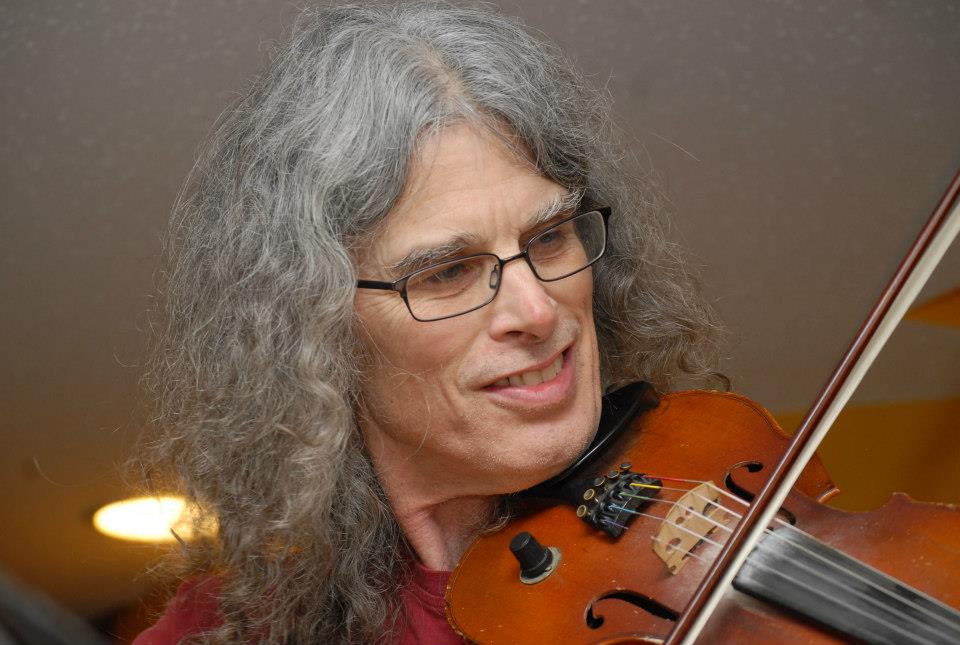
Sunday January 5th 2025 10am service conducted by Van Nixon with Kathy Nixon, Onesmo Kibira and mick laBriola.
more...Stephan’s Quintet is a visual grouping of five galaxies of which four form the first compact galaxy group ever discovered. The group, visible in the constellation Pegasus, was discovered by Édouard Stephan in 1877 at the Marseille Observatory.The group is the most studied of all the compact galaxy groups. The brightest member of the visual grouping (and the only non-member of the true group) is NGC 7320, which has extensive H II regions, identified as red blobs, where active star formation is occurring.
Four of the five galaxies in Stephan’s Quintet form a physical association, a true galaxy group, Hickson Compact Group 92, and will likely merge with each other. Radio observations in the early 1970s revealed a filament of emission between the galaxies in the group. This same region is also detected in the faint glow of ionized atoms seen in the visible part of the spectrum as a green arc. NGC 7320/19/18/18A/17. 290mly
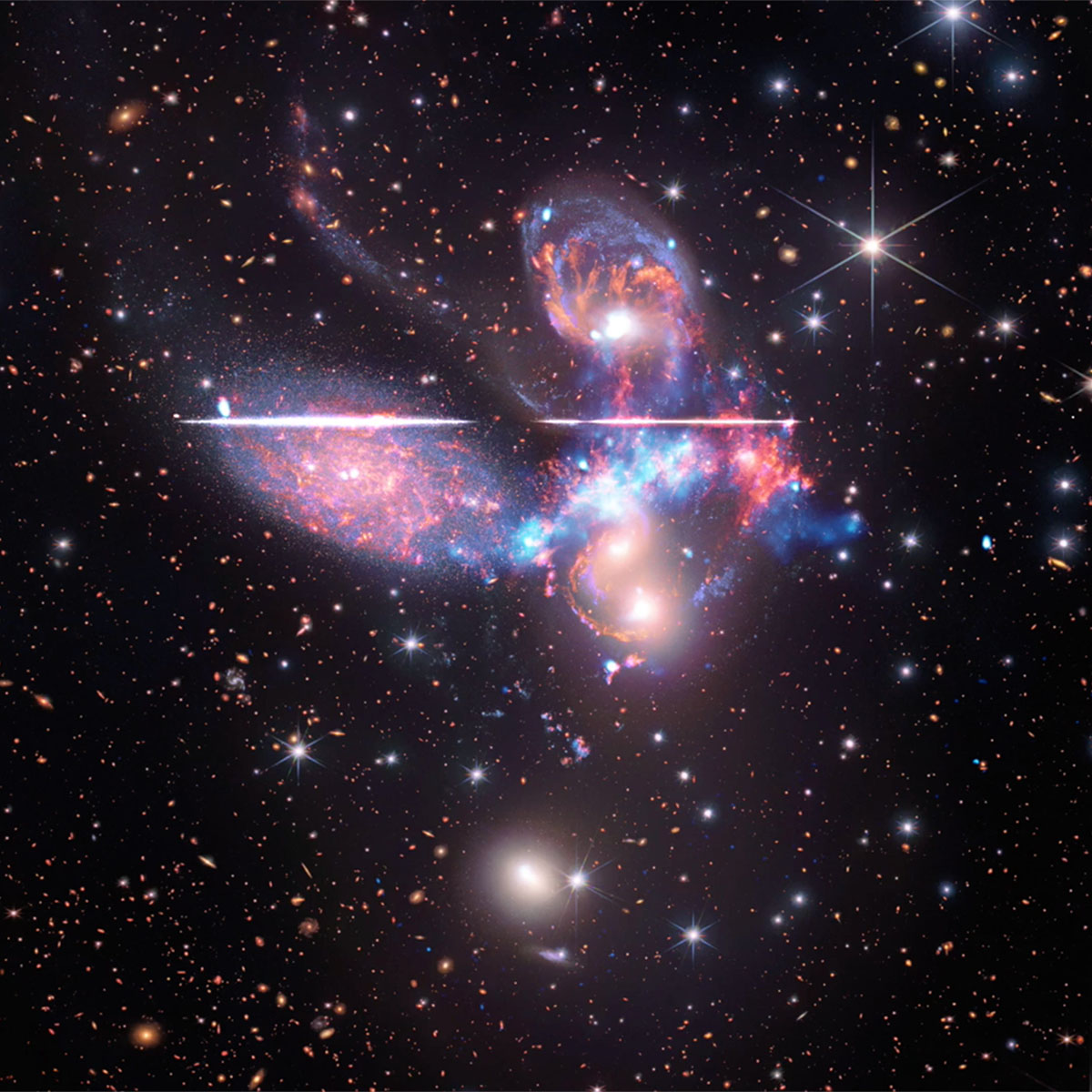
Samuel Cornelius Phillips (January 5, 1923 – July 30, 2003 Florence, AL) was an American disc jockey, songwriter and record producer. He was the founder of Sun Records and Sun Studio in Memphis, Tennessee, where he produced recordings by Elvis Presley, Roy Orbison, Jerry Lee Lewis, Carl Perkins, Johnny Cash, and Howlin’ Wolf. Phillips played a major role in the development of rock and roll during the 1950s, launching the career of Presley. In 1969, he sold Sun to Shelby Singleton.
Phillips was the owner and operator of radio stations in Memphis; Florence, Alabama; and Lake Worth Beach, Florida. He was also an early investor in the Holiday Inn chain of hotels and an advocate for racial equality, helping to break down racial barriers in the music industry.
more...Elizabeth “Libba” Cotten (née Nevills; January 5, 1893 – June 29, 1987) was an influential American folk and blues musician. She was a self-taught left-handed guitarist who played a guitar strung for a right-handed player, but played it upside down. This position meant that she would play the bass lines with her fingers and the melody with her thumb. Her signature alternating bass style has become known as “Cotten picking”. NPR stated “her influence has reverberated through the generations, permeating every genre of music.”
Her album Folksongs and Instrumentals with Guitar (1958), was placed into the National Recording Registry by the Library of Congress, and was deemed as “culturally, historically, or aesthetically significant”. The album included her signature recording “Freight Train“, a song she wrote in her early teens. In 1984, her live album Elizabeth Cotten Live!, won her a Grammy Award for Best Ethnic or Traditional Folk Recording, at the age of 90. That same year, Cotten was recognized as a National Heritage Fellowby the National Endowment for the Arts. In 2022, she was posthumously inducted into the Rock and Roll Hall of Fame, as an early influence.
more...Alvin Ailey Jr. (January 5, 1931 – December 1, 1989 Rogers, TX) was an American dancer, director, choreographer, and activist who founded the Alvin Ailey American Dance Theater (AAADT). He created AAADT and its affiliated Alvin Ailey American Dance Center (later Ailey School) as havens for nurturing Black artists and expressing the universality of the African-American experience through dance.
Ailey’s work fused theater, modern dance, ballet, and jazz with Black vernacular, creating hope-fueled choreography that continues to spread global awareness of Black life in America. Ailey’s choreographic masterpiece Revelations is recognized as one of the most popular and most performed ballets in the world.
On July 15, 2008, the United States Congress passed a resolution designating AAADT a “vital American cultural ambassador to the World”. That same year, in recognition of AAADT’s 50th anniversary, then Mayor Michael Bloomberg declared December 4 “Alvin Ailey Day” in New York City, while then-Governor David Paterson honored the organization on behalf of New York State.
more...Paul Wertico (born January 5, 1953, in Chicago, Illinois) is an American drummer. He gained recognition as a member of the Pat Metheny Group from 1983 until 2001,leaving the group to spend more time with his family and to pursue other musical interests. After Pat Metheny heard the Simon & Bard Group with Wertico and bassist Steve Rodby, he invited both to join his band. During his time with Metheny, Wertico played on ten albums and four videos, appeared on television, and toured around the world. He won seven Grammy Awards (for “Best Jazz Fusion Performance,” “Best Contemporary Jazz Performance,” and “Best Rock Instrumental Performance”), magazine polls, and received several gold records.
more...More Posts
- Daily Roots with Bob Marley
- The Cosmos with NGC 5866
- Steve Goodman Day
- Don Ellis Day
- World Music with Yuva Ratna Deepak Mehta
- Daily Roots with King Tubby
- The Cosmos with NGC 1569
- Charles McPherson Day
- Billy Taylor Day
- World Music with La Refrescante Banda Aljibe
- Daily Roots with Freddie McGregor
- The Cosmos with NGC 3359
- L. Subramaniam Day
- Steve Lacy Day
- World Music with Los Ruphay
- Daily Roots with Playing for Change
- The Cosmos with Berkeley 59
- Al Di Meola Day
- Junior Cook Day
- World Music with Deepak Ram
